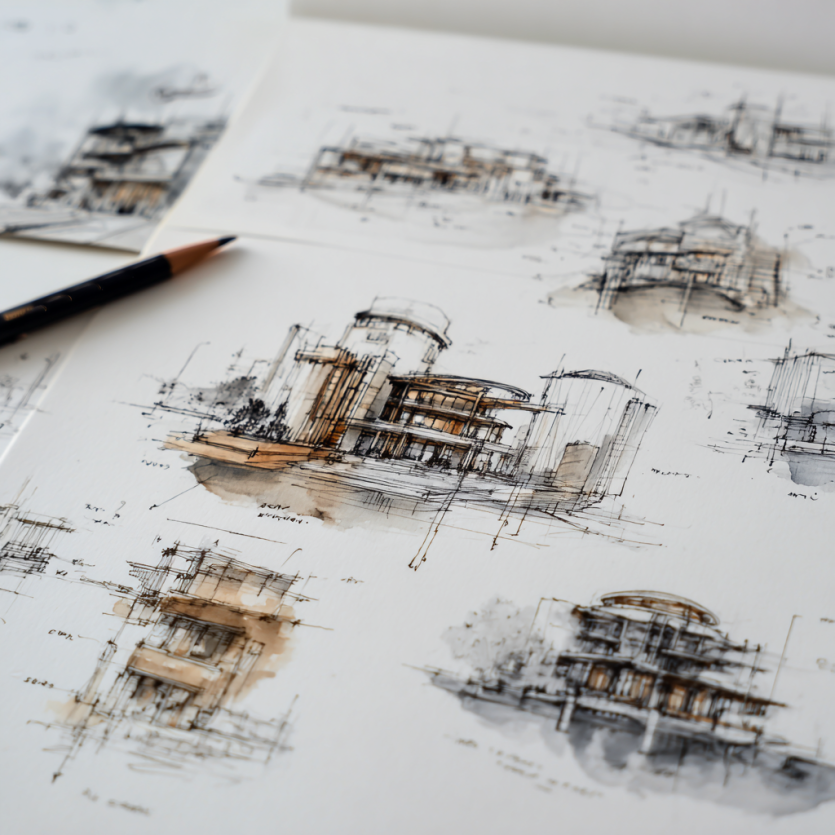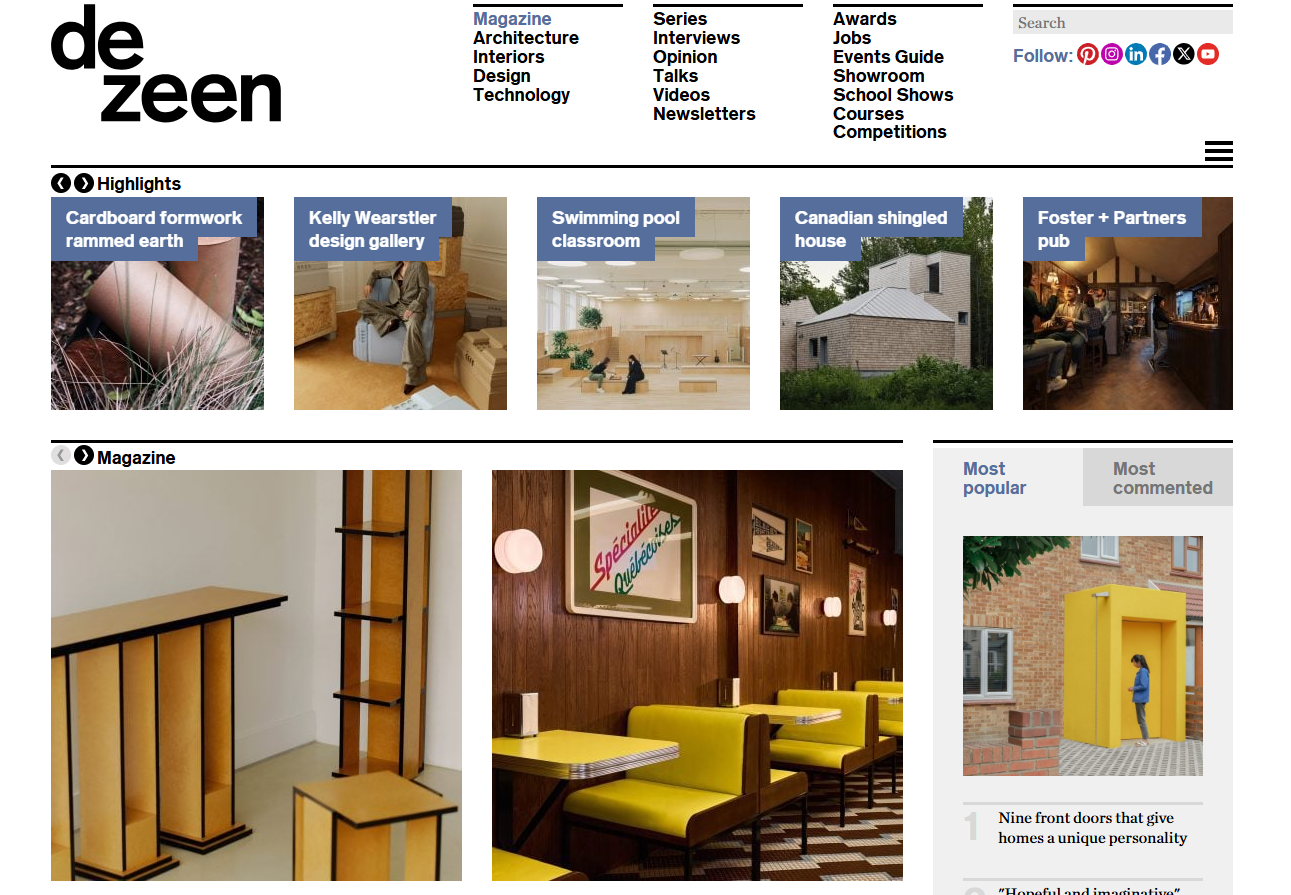When an Architect Stops Practicing Their Skills
The inspiration for this post
Back when I was tutoring at Nottingham Trent University (the university I studied at), I had a tutorial with a student and he was asking me about Perspective sections.. that same day I had a different student ask me about a very particular tool on Sketch Up.
I have not done a perspective section or even used Sketch Up in over 10 years, in practice or otherwise. That’s not to say I haven’t done other sections or drawings or used other software, but it made me think.. I need to brush up.
I spent so long learning and developing various skills at university, it would be a bit of a waste to then lose those skills now that I’m working in practice as an Architect.
This isn’t just so that when a student asks me something about what they are learning in university - I actually know (don’t get be wrong, this would still be great). It would also be good to be able to bang out a sketch, hand or digital at work as an Architect in practice or switch to a different software and know what I need to do without having to learn as much beforehand.
The Skills
After some thought, I have decided that the main skills I will be working on will be; Hand Drawing, Software, Design Development and Public Speaking.
Though if you are reading this and you practice these often, take a moment now to think about something you either enjoyed and/or were good at, at a different stage of your life, that you no longer do. Is there a way to get it back? Hopefully how I tackle my skills will provide some inspiration.
Hand Drawing
This has been on my list of things to practice and develop for an INSANE amount of time. I mean, before I started university about 12 years ago.
I sketch when I need to, to share ideas or communicate a concept but I know I would benefit from taking the time to practice sketching and if you’re reading this and it’s on your list but you have been procrastinating, start now.
As an Architect being able to do a quick sketch of whatever is in your head or be able to use a hand drawn to sketch to develop an initial concept into a building is invaluable.
Also, especially in this new era (probably not even that new), where AI is everywhere and people can bust out a photo realistic render or even an image that could be mistaken for a hand drawn sketch, in a couple of seconds, the hand drawn sketch is so much more important.
The easiest way to practice is literally to grab a pen or pencil, some paper and draw the first thing you see, then find something else, and continue. Just doing this will reap reward, sketches will get better and confidence in sketching will also improve.
Another way would be to follow a challenge of some kind. Inktober is an excellent example of this. Inktober is a a 31 day challenege to draw everyday responding to a list of set out prompts. This is the prompt list for 2025.
That’s Inktober Classic, but they also have Inktober 52 where the prompts are once a week for the year.
For me, I will be making the effort to carry a sketchbook around with me and do more impromptu sketches whilst also putting the pressure on oaccasionly and forcing myself to practice particular architecture drawing such as the perspective section or a quick sketch of an ornate decoration on a building. This should cover all bases!
Software
To be honest, I’m pretty good at knowing a little bit about a few different softwares.
In my first practice as an Architectural Assistant in New York, I used AutoCAD and SketchUp, at university I started using VRay, in my first UK based architectural assistant job I used AutoCAD again, then Revit, then ArchiCAD and now I’m back to Revit with Enscape. Revit is the industry standard, so I’m told, so I’m glad to be learning it because although it can seem quite complicated at first the things you can do on it can make it an incredibly efficient software to learn.
I threw this in because I know, especially if you stay in the same practice the software of skills of architectural assistants and architecture students could be limited. It is so important to know a range of software not only so you use the best software for the task but also so that in future interviews you can say you have experience. This is incredibly helpful for employers as they know you’re not starting from scratch.
Bringing it back to me…something I could afford to work on is knowing the capabilities of the software.
I know this will come over time, but I really don’t like the idea of spending a day on something tedious when Revit or a different software or plug in, could do it in a few minutes if I had created a template or used some sort of system to make everything more efficient.
There are many ways I can gain knowledge and experience on different software, no. of course is using it more in my day-to-day work life, another way is to use free tutorials available on YouTube and to an extent quick reels or shorts on Instagram or YouTube and lastly, which would potentially be more efficient, but at a cost, attending a course of some kind.
Design Development
Ah, this takes me back. As a student and then as an Architecture Studio Tutor at university this was my absolute favourite thing to do and then to teach and strongly mark.
Why? Because I believe it is the most important part of architecture. It is everything. Spend too little time on it and your final design will be, well sh*t.
It’s not as black and white as that but I’m a firm believer that all bad architecture could be solved with a bit more time in the design development stage.
Yes, there is of course the risk of spending too much time in this stage, over doing it, and it getting to a stage where the time you’re putting in doesn’t reflect what you’re getting out. But help and advice from peers help in this situation.
Anyway, since being a student I haven’t had much time in practice to work on the design development. Many reasons for this,
1, Time is money, clients whoever they may be, don’t always see the benefits of spending more time on the design and/or just don’t want to pay for it.
2. My first UK based architectural assistant job was in heritage and conservation, renovating existing rather than designing new, and then in another job I barely did any design work because I was purely working on contract administration.
Now, working in a firm where design is more important, I feel myself working harder than I should need to at design, considering I’ve been in architecture for 10+years.
To get back to standard, in my own time and on work breaks, I have been reading articles in Architects journal, Dezeen, Archdaily, and just looking at more buildings in general. Dezeen is a personal favourite for this as it is so varied and the examples of different architecture can be truly stunning.
I have been sketching some of the more interesting precedents I found, practicing my hand drawings skills as well and I could take this a step further and enter into some competitions.
I have never entered one before but I see the value and the similatories between the university studio enviornment and an architectural competion. For me, and I am sure a few of you, the cost to enter competitons could be a barrier, but there is no harm in taking part for your own learning but not actually entering.
Public Speaking
This old chestnut. I talk about this a lot because it is an ongoing skill that I have been working on and writing about.
Since writing that post I have looked into joining Toastmasters and did attend an evening session online. It however, was not for me.
As a fairly anxious public speaker, the environment did not feel comfortable and I did not feel like sharing. This however did inspire me to starting my own community specifically for those who struggle with public speaking in architecture. If you are interested, please click here to fill out the interest form.
If you got this far, thank you for reading! I hope you found this weeks issue helpful to you or for a friend or colleague. Feel free to reply or message me on any of the social handles below with your thoughts or any questions you have.
Signing off,
Aliya












